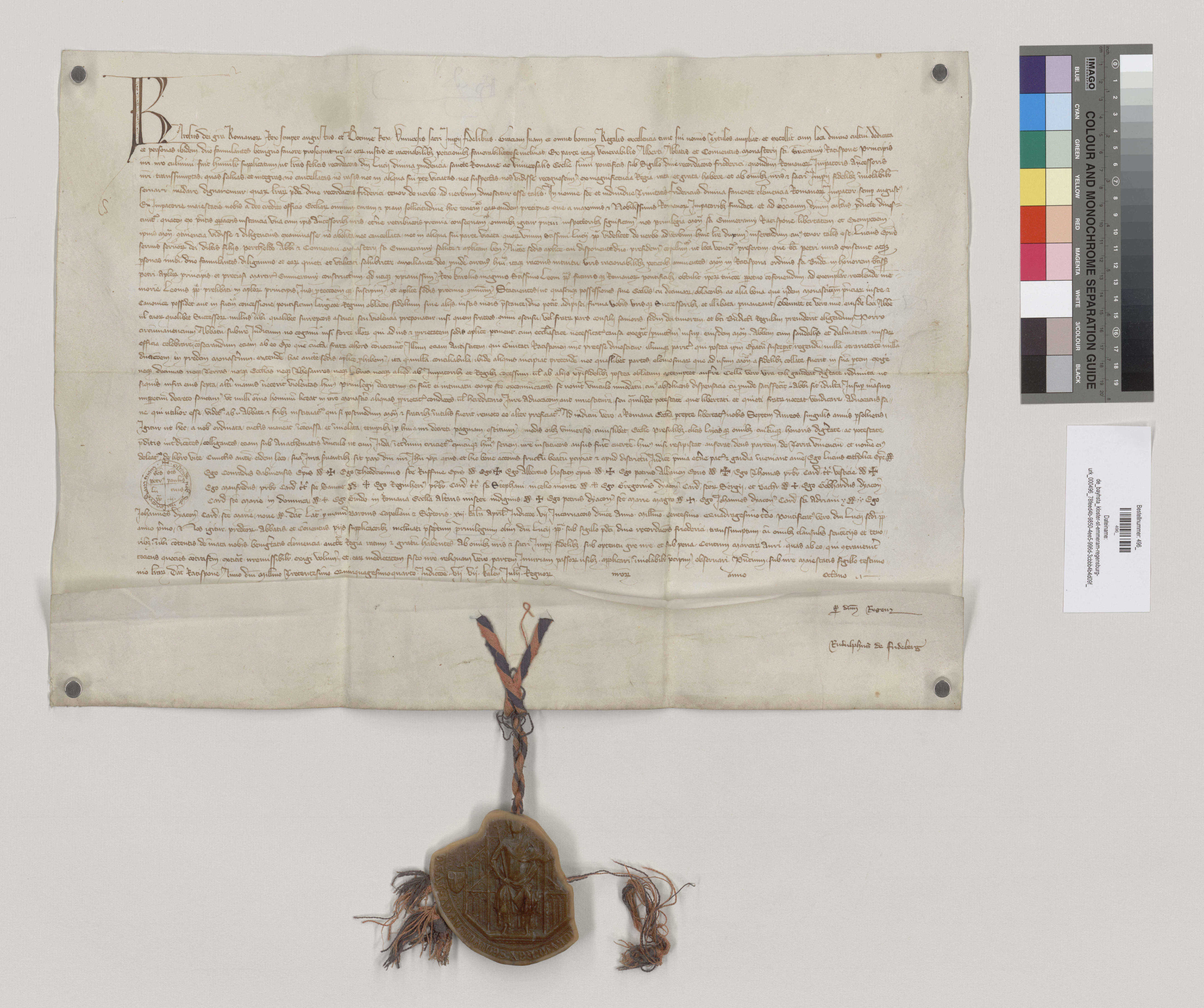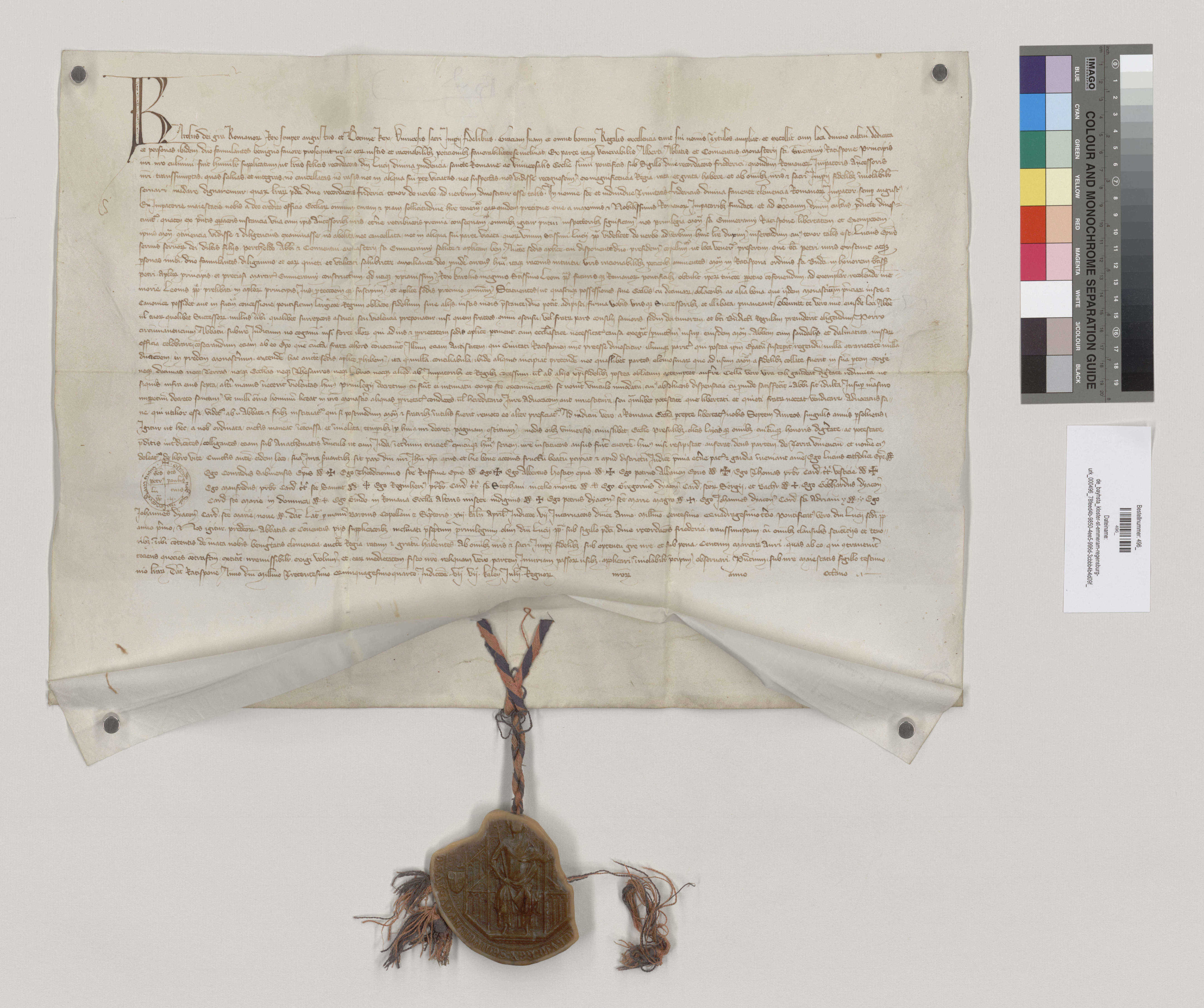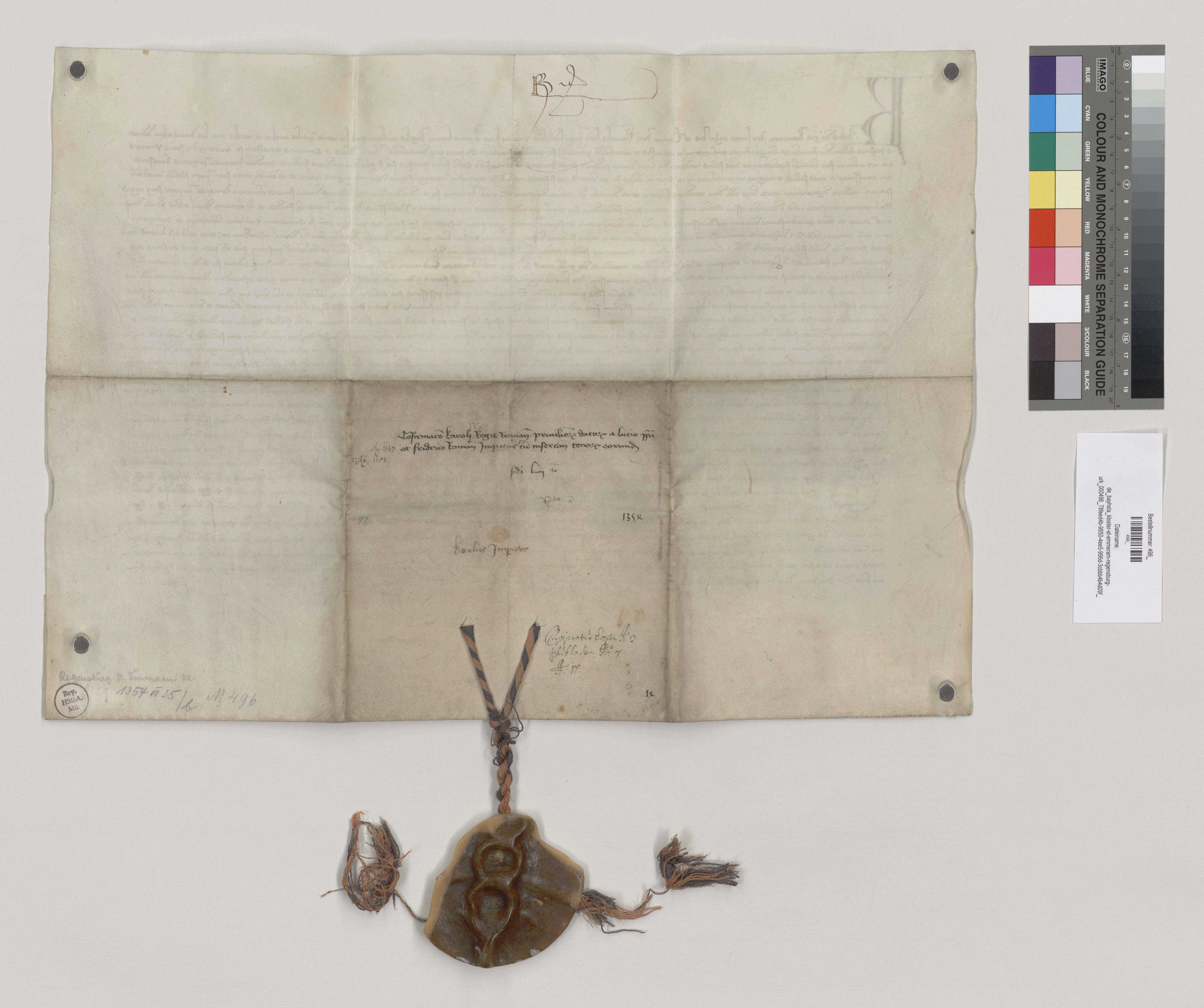Charter: Kloster St. Emmeram Regensburg Urkunden (0794-1800) BayHStA, Kloster St. Emmeram Regensburg Urkunden 496
Signature: BayHStA, Kloster St. Emmeram Regensburg Urkunden 496
Add bookmark
Edit charter (old editor)
1354 Juni 25, Regensburg
König Karl IV. vidimiert auf Bitten Abt Alberts und des Konvents von St. Emmeram ein von Kaiser Friedrich [I.] ausgestelltes Vidimus vom 23. September 1153 (siehe Nr. 36) über die dem Kloster am 20. März 1144 durch Papst Lucius II. (XIII kalendas aprilis indictione VII incarnacionis dominice anno millesimo centesimo quadragesimo tercio) ausgestellte Urkunde, die dem Kloster u.a. päpstlichen Schutz, freie Wahl des Abts und Unabhängigkeit vom Bischof gewährte.S=A
Current repository:
DE-BayHStA,
Provenienz: Reichsstift Regensburg-St. Emmeram
DE-BayHStA,
Provenienz: Reichsstift Regensburg-St. Emmeram
ein an orange-lila Seidenschnüren anhängendes SiegelMaterial: Perg.
Dimensions: 37x52 cm



Original dating clause: Datum Ratispone anno domini millesimo trecentesimo quinquagesimo quarto indicione VII VII kalendas iulii regnorum nostrorum anno octavo.
Editions:
- Kraus, Liber probationum Nr. CXXXVI
- RB 8 S. 298
Language:
Notes:
Hinweis: Vidimus dieser Urkunde in Urkunde vom 12. Juni 1455 (siehe Nr. 1666)
Places
- Regensburg
- Regensburg (krfr.St.), St. Emmeram (Reichsstift): Äbte \ Albert II. von Schmidmühlen
Persons
- Karl IV., römisch-deutscher König und Kaiser
- Lucius II., Papst
- Schmidmühlen: Albert von, Abt von Sankt Emmeram
München, Bayerisches Hauptstaatsarchiv, Kloster St. Emmeram Regensburg Urkunden (0794-1800) BayHStA, Kloster St. Emmeram Regensburg Urkunden 496, in: Monasterium.net, URL </mom/DE-BayHStA/KURegensburgStEmmeram/000496/charter>, accessed at 2024-11-24+01:00
You are copying a text frominto your own collection. Please be aware that reusing it might infringe intellectural property rights, so please check individual licences and cite the source of your information when you publish your data
The Charter already exists in the choosen Collection
Please wait copying Charter, dialog will close at success